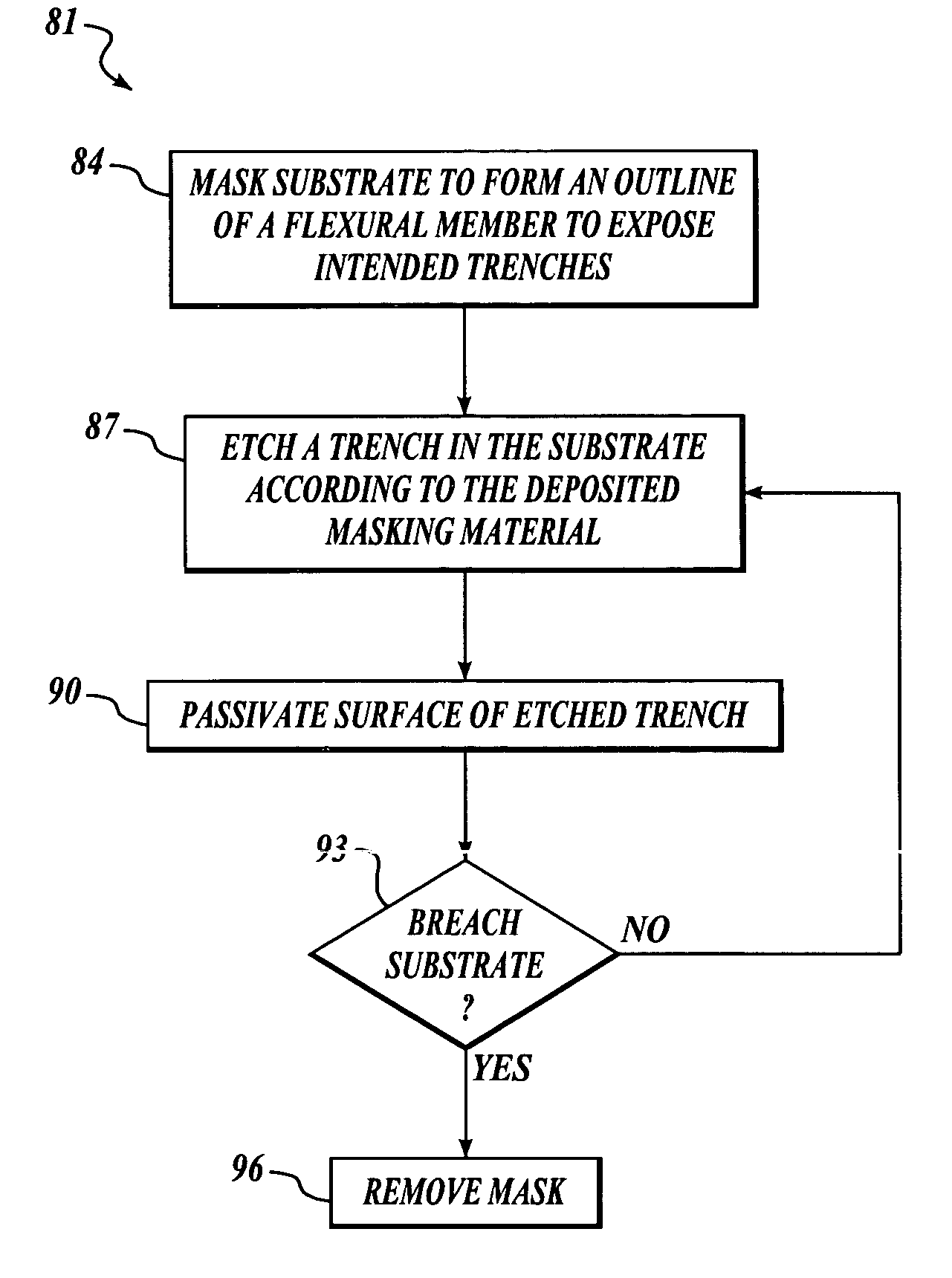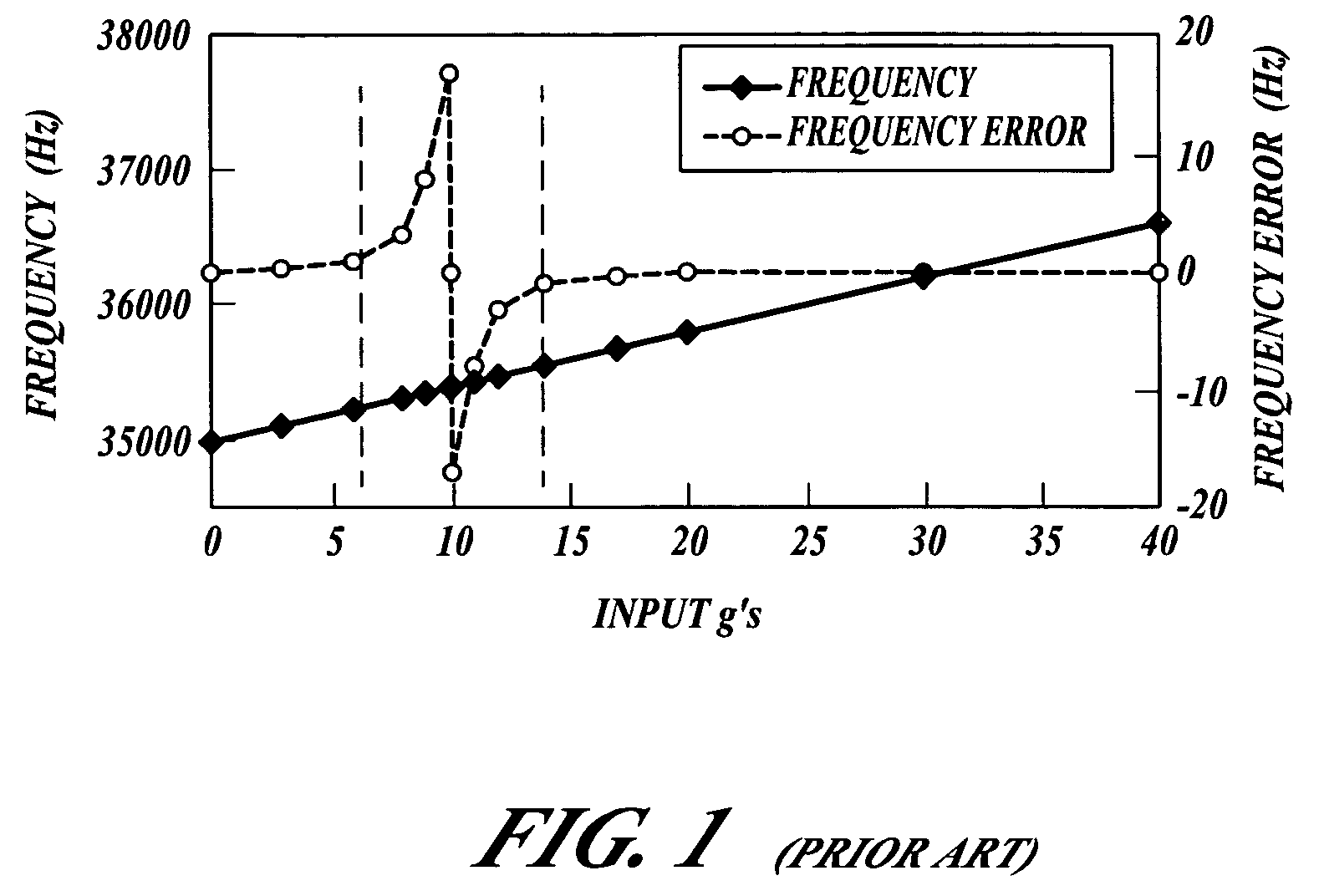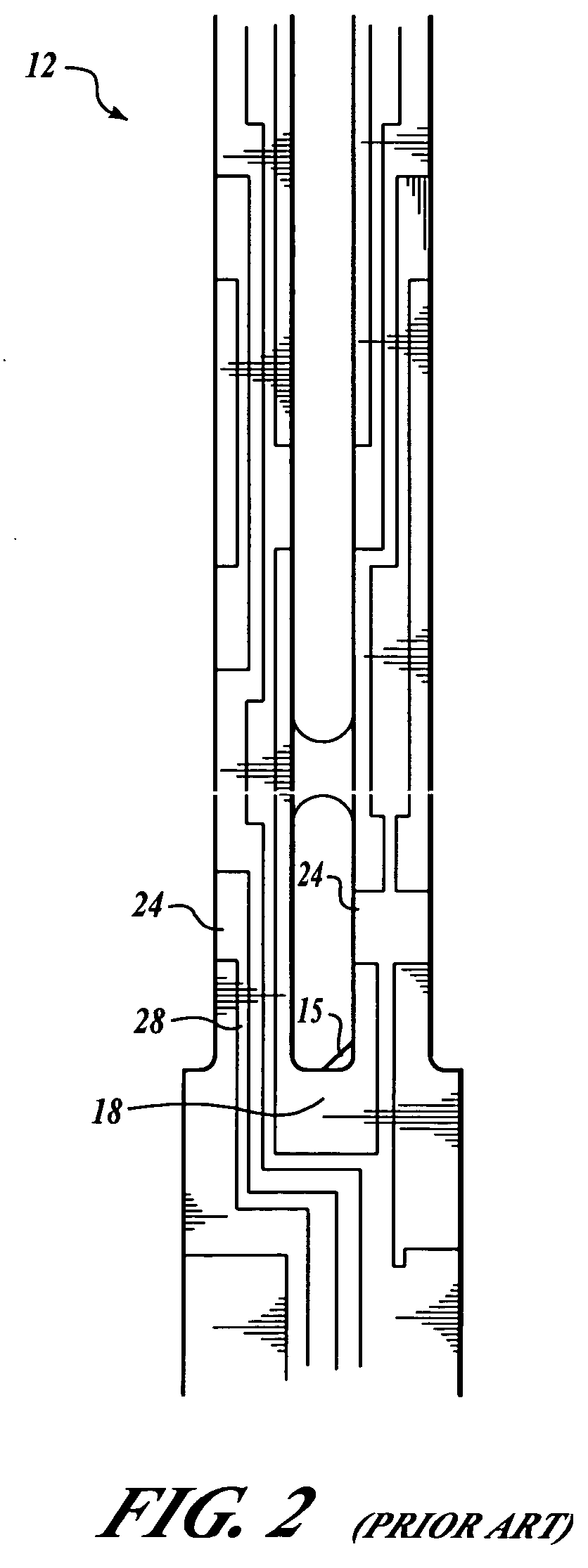Quartz Tuning-Fork Resonators and Production Method
a technology of tuning forks and resonators, which is applied in the direction of polycrystalline material growth, after-treatment details, instruments, etc., can solve the problems of not being able to produce detfs, 15 hz, and many performance limitations, and achieve the effect of strong structur
- Summary
- Abstract
- Description
- Claims
- Application Information
AI Technical Summary
Benefits of technology
Problems solved by technology
Method used
Image
Examples
Embodiment Construction
[0032] In FIG. 3, a deep reactive ion etching (DRIE) process 81 is shown. In one presently preferred approach to DRIE etching, high-density plasma with an optimize gas mixture is used. At a block 84, a piezoelectric substrate (such as crystalline Quartz (SiO2)) is masked with a non-reactive mask, such as nickel or other comparable metal. The mask forms an outline of a flexural member to expose intended trenches. The mask protects the substrate by forming an etching shadow. At a block 87, a plasma source etches the substrate to form a trench that outlines the DETF, thus removing the material including granules in a crotch region (that might compromise the performance of the DETF. The plasma-to-wafer potential bias is set so that the ions which are attracted to horizontal surfaces of the substrate result in enough reaction energy to allow the ions to chemically react with the surface. The plasma gas species and mixtures are chosen to create charge-neutral volatile molecules when they ...
PUM
| Property | Measurement | Unit |
|---|---|---|
| Electrical resistance | aaaaa | aaaaa |
| Depth | aaaaa | aaaaa |
| Piezoelectricity | aaaaa | aaaaa |
Abstract
Description
Claims
Application Information
 Login to View More
Login to View More - R&D
- Intellectual Property
- Life Sciences
- Materials
- Tech Scout
- Unparalleled Data Quality
- Higher Quality Content
- 60% Fewer Hallucinations
Browse by: Latest US Patents, China's latest patents, Technical Efficacy Thesaurus, Application Domain, Technology Topic, Popular Technical Reports.
© 2025 PatSnap. All rights reserved.Legal|Privacy policy|Modern Slavery Act Transparency Statement|Sitemap|About US| Contact US: help@patsnap.com



